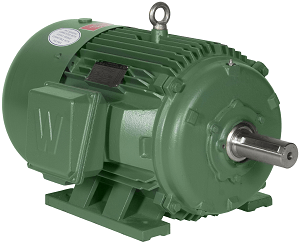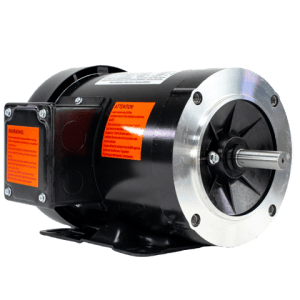
Electric motors have innumerable applications. The simple, efficient, reliable conversion from electric power to kinetic rotary output is invaluable to modern industry. Yet, application suitability is often determined by a passive mechanical part – the motor enclosure.
Factors such as ambient explosive gas, weather conditions or environmental contaminants like dust, debris, moisture or chemicals are critical considerations in motor selection.
In a simplified sense, electric motors are either open or closed. Open drip-proof (ODP) motors permit a free exchange of air between the motor windings and the ambient environment. Nonetheless, ODP motors are meant for industrial applications. They can withstand limited exposure to moisture, oils or chemicals and can shield the motor from potential drips or trickle from specific incidence angles.
Ingress Protection (IP) ratings can be used to determine the level of protection an enclosure provides from solid objects and liquids. Most modern ODP motors feature an IP23 rating, meaning that the motor is protected from fingers and solid objects greater than 12 mm, and that water falling as a spray at an angle up to 60° from the vertical shall have no harmful effect on the equipment inside of the enclosure.
Additionally, the light-duty ODP enclosure results in a lightweight motor, enhancing portability. The open nature also provides excellent thermal management. However, these motors are unacceptable for applications with the potential for splashes, washdown or flammable gases or debris. ODP motors are often the least expensive type of industrial electric motor since the enclosure is minimal, and they are optimal for clean, indoor uses.

Enclosed motors serve the bulk of industrial applications. The enclosure is often a rigid frame, which is either smooth or finned to increase surface area and heat exhaust. An external fan is attached to the shaft to increase circulation and convection rate. Totally enclosed, fan-cooled (TEFC) motors often feature IP ratings of IP54 or IP55, which permit a very limited amount of dust to intrude into the motor enclosure and protect the motor against splashing (e.g., IP54) or directed water jets (e.g., IP55). TEFC motors are more resilient than ODP motors, and they are common in pump, fan, compressor, conveyor and material handling applications.
There is also the TEFC, explosion proof (TEFC-XP) variant. These motor enclosures prevent a potential motor arc or explosion from igniting a dangerous environment that contains flammable dust or gas. This is a key consideration in oil and gas recovery and processing, chemical processing and mining industries. In this case, explosion proof does not mean that the motor will not explode, nor is it impervious to external explosions. Rather, the motor enclosure has been machined to contain the explosion within, and flame paths permit the escape of hot gases but dampen the flames and temperatures to prevent a secondary explosion.
Explosion proof motors are organized into classes and divisions. Class I materials are flammable gases; Class II materials are pervasive, flammable dusts. Division is determined by prevalence of the material. If it is present under normal operating circumstances, it is a Division 1 location. If the combustible material is only present during a separate fault or equipment failure, it is a Division 2 location. Specifically, Division 1 motors only require a single equipment failure – that of the motor – to create a perilous condition; Division 2 requires a motor fault, plus another equipment failure as well.
For applications that require hygienic or sanitized components to withstand high-pressure washdowns, like in the food and beverage, medical or pharmaceutical industries, totally enclosed, non-ventilated (TENV) motors are ideal. TENV motors are also suitable for applications where a cooling fan is at risk of becoming jammed or entangled by environmental contaminants. Thermal energy is transferred to the motor enclosure and removed via ambient convection or conduction with the mounting surface. Finned enclosures are common, as are stainless steel materials to improve corrosion resistance. Washdown duty motors typically have IP ratings of IP56.
When it comes time to replace an electric motor, enclosure is key to motor longevity and personnel safety. Sometimes this is a straightforward swap, but often there are other considerations to navigate, such as power supply, RPM, torque and horsepower. When challenges arise, consult Worldwide Electric.
WorldWide Electric Corporation is a leading manufacturer and importer of electric motors, motor controls and gear reducers, as well as the exclusive master distributor of Hyundai Electric’s low-voltage motors.
